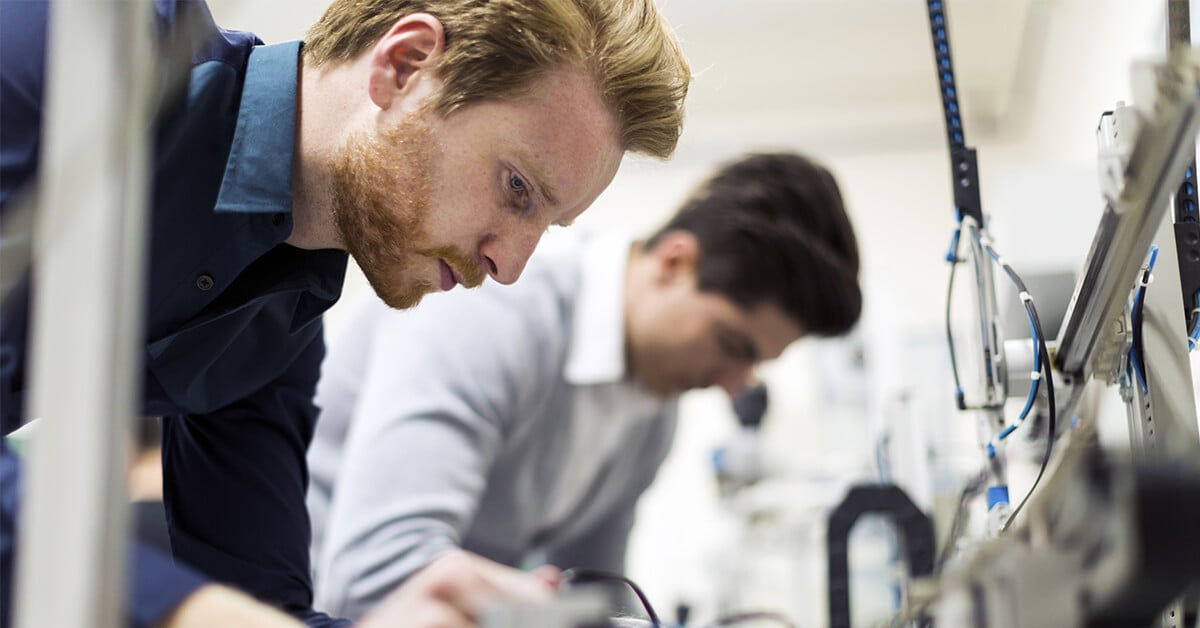What is a Truck Roll? And How Can You Reduce Your Carbon Footprint?
If you hang around the customer support industry long enough, you’ll come across the phrase “truck roll.” What exactly counts as a truck roll, though? And, perhaps more importantly, why should you care about truck rolls at all?
Imagine your organization is implementing a “Green” initiative. Perhaps you don’t have to imagine! As a part of this initiative, you’ve been tasked with seeing what you can do to reduce the carbon footprint of your customer support line—specifically, reduce truck rolls.
Your customer support line handles all kinds of customer issues. Your technicians handle installations and repairs. Support agents help with fixes, bugs, and login issues. Which of these tasks qualifies as a “truck roll?” And how do truck rolls influence your organization’s carbon footprint?
This post will answer the question: What is a truck roll? Additionally, we’ll raise a new question: Are truck rolls really necessary? The answer may surprise you and help you lower your carbon emissions at the same time.
What is a Truck Roll?
How do you define a truck roll? Simply put, a truck roll occurs whenever you send a technician or support agent to a customer site to solve an issue. Many companies will dispatch technicians in medium-duty trucks, which is the origin of the term ‘truck roll.’ However, any dispatch of a technician counts as a truck roll, even if they commute to your customer site in a regular passenger vehicle.
Truck rolls are commonly used for technical support in telecommunications, information technology, and more. Though they can be helpful and, in some cases, necessary to your customers, there is no way around it: Truck rolls are expensive and terrible for your carbon footprint. How can you reduce your carbon footprint without sacrificing quality in your customer support efforts?
Related Read: Remote Visual Assistance vs. Site Visits: Which is More Effective?
Average Truck Roll Carbon Emissions
To establish just how much you can impact your carbon footprint by cutting down your truck rolls, let’s first examine just how much the average truck roll contributes to your organization’s carbon emissions.
Several factors will influence the environmental impact of your standard truck roll:
- Truck Size: A semi-truck emits more CO2 than a sedan, of course. The type of vehicle you are using in your truck rolls will impact how much damage you’re doing to the environment.
- Distance Traveled: Are most of your customer sites within a ten-mile radius of your location? If so, your carbon emissions will be less than if your customer sites are twenty or thirty miles away, on average.
- Idling Time: Even if your trucks are only traveling ten miles, if it takes them 45 minutes to get there because of traffic, you’re having more of a negative impact on the environment than if they encountered no traffic on their route. You’re also wasting gas and technician time any time the truck is stuck idling in traffic.
To give you a general idea of your carbon emissions, the standard passenger vehicle emits 411 grams of CO2 per mile. If you are using trucks larger than the average passenger vehicle or run on diesel, your emissions are likely even higher than this.
How to Reduce Truck Rolls
The best way to reduce your carbon footprint related to your truck rolls is… you guessed it: Reducing truck rolls altogether. But your customers need support from your technicians for your business to run, so how can you possibly reduce truck rolls without negatively impacting your customer support efforts?
Simple: Implement a remote video support tool.
Remote support used to be audio-only. This approach is great for triaging customer issues and helping with login troubles. Still, to offer valuable, convenient remote support your customers will love, you’ll need to implement a remote video support tool.
Remote video support tools like Blitzz allow customers and agents to talk face-to-face. You can also use the customer’s mobile device camera to get your technicians’ eyes on hardware problems.
Technicians can take advantage of modern technology like augmented reality with an advanced tool. These features allow them to draw or display text directly on the customer’s camera viewfinder, guiding them through a solution as easily as they could on-site.
Related Read: Sourcing Best Live Assistance for Field Service Team
We surveyed our customers to see how much using a remote support tool like Blitzz impacted their truck rolls and found that, on average, our customers saved five to six truck rolls per service rep every month. That’s an awful lot of carbon emissions—and money—saved with this simple measure!
Benefits of Reducing Truck Rolls
We’ve discussed the environmental benefits of reducing truck rolls, but those aren’t the only wins you’ll see by implementing this change.
Switching to virtual customer service will also help you boost your bottom line. Fuel isn’t just damaging to the environment: It’s expensive. The fewer technicians you send on-site, the less money you’re spending on fuel and vehicle maintenance. Additionally, technicians can jump from call to call with ease when using remote video support instead of wasting valuable time on the road.
Customers also appreciate the flexibility of remote video support. Instead of calling your support line, waiting on hold to speak to a representative, then waiting again for a technician to arrive, they can simply schedule an appointment online. When their appointment time comes, all they need to do to get help is click a link in an SMS message. One-click remote support at its finest.
What is a Truck Roll, and How Can Remote Support Reduce Them?
Do truck rolls still have their place in the modern customer support environment? Yes. But with advances in customer support technology, like AR-enhanced remote video support, they are nowhere near as vital as they were in years past. You can reduce your carbon footprint, save cash, and increase customer satisfaction at the same time by adopting a remote-first model of customer support. In other words, allow a remote video support tool to help you solve most issues without going on-site, and only roll a truck when you absolutely need to.
Blitzz has been helping customers save money and CO2 emissions for years. Our remote support tool has all the advanced features you need, like AR, text extract, and robust reporting, all packaged in a simple-to-use interface your customers and technicians will love.
Don’t take our word for it—see the power of Blitzz for yourself! Check out our free trial to take Blitzz for a test drive with your team today.




